CheddarA Journey to the Heart of America’s Most Iconic Cheese
One of the oldest, most ubiquitous, and beloved cheeses in the world, the history of cheddar is a fascinating one. Over the years it has been transformed, from a painstakingly handmade wheel to a rindless, mass-produced block, to a liquefied and emulsified plastic mass untouched by human hands. The Henry Fordism of cheddar production in many ways anticipated the advent of industrial agriculture. They don’t call it “American Cheese” for nothing.
Cheddar is one man’s picaresque journey to find out what a familiar food can tell us about ourselves. Cheddar may be appreciated in almost all American homes, but the advocates of the traditional wheel versus the processed slice often have very different ideas about food. Since cheddar—with its diversity of manufacturing processes and tastes—is such a large umbrella, it is the perfect food through which to discuss many big food issues that face our society.
More than that, though, cheddar actually holds a key to understanding not only issues surrounding food politics, but also some of the ways we think of our cultural identity. Cheddar, and its offshoots, has something to tell us about this country: the way people rally to certain cheddars but not others; the way they extol or denounce the way others eat it; the role of the commodification of a once-artisan cheese and the effect that has on rural communities. The fact that cheddar is so common that it is often taken for granted means that examining it can lead us to the discovery of usually unspoken truths.
Author Gordon Edgar (Cheesemonger: A Life on the Wedge) is well equipped to take readers on a tour through the world of cheddar. For more than fifteen years he has worked as an iconoclastic cheesemonger in San Francisco, but his sharp talent for observation and social critique were honed long before then, in the world of ’zines, punk rock, and progressive politics. His fresh perspectives on such a seemingly common topic are as thought-provoking as they are entertaining.
Gordon Edgar loves cheese and worker-owned co-ops, and has been combining both of these infatuations as the cheese buyer for San Francisco’s Rainbow Grocery Cooperative since 1994. Edgar has been a judge at numerous national cheese competitions, a board member for the California Artisan Cheese Guild, and has had a blog since 2002, which can be found at www.gordonzola.net. Edgar is the author of Cheesemonger: A Life on the Wedge (Chelsea Green 2010) and he enjoys mold in the right places, good cheese stink, and washing his hands upwards of one hundred times a day.
“From the chief ingredient in Kraft’s Mac ‘n’ Cheese to the quintessential artisan creation, cheddar cheese represents the extremes of American food culture—all delightfully deconstructed and savored in Gordon Edgar’s eponymous book. Great reading for aficionados of food and cultural history.”–Sally Fallon Morell, president, The Weston A. Price Foundation
“Edgar (Cheesemonger) explores the U.S. production of cheddar cheese and how this popular food has affected American history and culture. The book focuses on the broad history of cheddar production from its origins in England to current methods used in the United States with emphasis on the cheese hubs of Wisconsin, Vermont, and California. The culture and politics surrounding cheesemaking and dairy farming in these states are compared and contrasted, and interspersed with amusing anecdotes from Edgar’s many cheese-judging and research trips. Of course, the varying types and flavors of American cheddars and curds are discussed, using case studies of famous producers such as Cabot and Tillamook, and interviews with prominent cheesemakers. Edgar is especially interested in the ways that cheesemaking has changed over the years, and addresses changes in farming technology, scientific advances, roles of women, exports, and standardization of cheddar flavors, appearance, and processing. VERDICT: A wry look at the world of cheesemaking, this work will interest casual cheese aficionados, but its broad scope will likely not provide new information to fervent fans or industry professionals.”–Library Journal
“On the surface, it would be easy to dismiss a book about a cheese so integral to the gustatory fabric of the American experience that it’s hardly noticed as much more than a standard hamburger’s melted shroud. But this paean to America’s cheese tells the journey of a food integrally linked to the rise of ‘cultures’ in America (cheese and manufacturing, both) and, no less, to our value system. In Gordon’s eminently capable hands, what could be a staid single-subject book is blithely entertaining, peppered with laugh-out-loud, respectful and occasionally irreverent anecdotes, and ultimately a story chock-full of historical and contextual references that come together to create a newfound understanding and respect for a cheese that, because of this essential book, will never be ‘just cheddar’ again.”–Laura Werlin, author of Laura Werlin’s Cheese Essentials
“Cheddar by Gordon Edgar is a book of vignettes, ripened from the author’s wanderings around the country, milled with both large and small cheese-making experiences, peppered throughout with Gordon’s political views, and aged to perfection. Edgar shares his knowledge in sometimes smooth, sometimes sharp, and sometimes bitter ways, coming up with an overview that is tried, ripened, and ready to read.”–Ricki Carroll, owner, New England Cheesemaking Supply Company
“Gordon Edgar’s latest work, Cheddar, is a lively story of this much-maligned but iconic cheese. No longer will I quickly pass over the large blocks of golden cheddar. Edgar has traveled the country unearthing the historic roots of cheddar, from the artisan clothbound wheels to the mass-produced blocks of commodity cheese, and writes with wit and humor. His passion and experience as a cheesemonger are evident, and the reader can’t help but love cheddar by the end of this spirited book.”–Kurt Timmermeister, author of Growing a Farmer
“In this witty and well-researched study of an iconic food, Gordon Edgar serves up a satisfying slice of Americana. More than any other cheese, cheddar evidences America’s tradition of innovation and embodies the paradoxes of our food system. From mammoth, processed blocks to clothbound, lard-rubbed wheels, Edgar details how cheddar straddles the continuum of industrial and artisanal manufacture to safely nourish great numbers of people while reinforcing class distinctions marked by taste. This welcome book credits the labor and ingenuity of America’s food makers, both past and present.”–Heather Paxson, author of The Life of Cheese: Crafting Food and Value in America
“Over the years I have read many thought-provoking works on cheddar cheese, mostly dealing with cheese science and technology, but rarely have such texts been ‘fun’ to read. Gordon Edgar’s exploration of cheddar is both thought-provoking and fun, and has given me a fresh perspective on a cheese that I have studied for years and cherished all my life.”–Paul Kindstedt, author of Cheese and Culture
“Kudos to Gordon Edgar for his comprehensive history and contemporary analysis of America’s iconic cheese. For any lover of cheddar, Edgar crafts the story of its unique place–from early farm-based, handmade products to standardized, industrial cheese to its renaissance over the past twenty to twenty-five years. A book to savor, it helps us understand how cheddar evolves over four centuries. He stirs an entertaining vat of literature, science, poetry, and sociology to reflect broad changes in American agriculture and our connections to food and place. Make sure to have a piece of cheddar, and perhaps a glass of beer, to accompany your journey!”–Jeffrey Roberts, author of The Atlas of American Artisan Cheese
I like journeys. Predating my “career” as a cheesemonger, I had a teen obsession with a book on roadside attractions. I had the opportunity to visit quite a few in California growing up, then many more in some cross-country drives in the mid-eighties, but for some reason (one might call it fate) the page featuring “The World’s Largest Cheese” called to me—but it just didn’t fit into any of the routes I took. Even as I later visited Wisconsin on cheese business, I could never quite accomplish my quest. So finally, about ten years ago, when a friend needed help in driving across the country, I volunteered, with one condition. We had to take one extra day to see the cheese monument.
Since my friend is a sociologist by trade, she didn’t flinch at this request. I have never been to grad school, but I am sure it must be part of the training of sociologists to not show emotion when people demonstrate odd cultural obsessions. I have never asked her, but perhaps she shifted from friendly conversation to research mode at that moment. Whatever the case, she agreed, even though it added a couple of hundred extra miles to a twenty-five-hundred-mile trip.
I have visited a lot of roadside attractions. Crazy roadside art may just be my favorite part of being an American. Not many—actually, surprisingly few, as far as I’m concerned—are cheese or dairy related, although I did get my picture taken with the enormously accurate veiny udders of Salem Sue, the World’s Largest Holstein Cow, while passing through North Dakota. Over a few years of my life, I spent an inordinate amount of time driving from one end of the country to another, and while I have seen the important sights—the Washington Monument, Mount Rushmore, and so on—I always enjoyed what I considered “the real American monuments” more: places built by obsessed and otherwise frustrated but extremely talented people. Places such as the Garden of Eden, Nitt Witt Ridge, Watts Towers, the House on the Rock, the Winchester Mystery House, and the Forestiere Underground Gardens.
Unexpectedly on this journey, in fact, my sociologist friend and I had stopped at the amazing Porter Sculpture Park in South Dakota. We hadn’t planned it; we were just driving on I-90, and there it was. While wandering around the welded scrap metal art in the insane Midwest summer humidity, I asked the creator if he lived there year-round. No, he replied, he lived on a farm and raised sheep the rest of the year.
“For meat or milk?” I asked.
He looked at me as though I was yet another stupid city person. “People milk sheep?” he said. He wasn’t really asking.
Clearly, if someone who works with livestock for a living has never heard of a traditional and common way that many people in the world use that same animal, there is a need for cheese history to be more widely taught. In France (and, true, one would expect this of France) cheese is so important to the culture that it has been argued that Camembert is a national symbol. One of the best cheese books ever written argues that one can glimpse centuries of change in France’s national character by looking at the history of Camembert.4 In fact, one of the most enduring battles in Normandy is over who really invented Camembert. The statue commemorating Marie Harel as the inventor of Camembert is undoubtedly the reason that she is remembered today, perhaps at the expense of others who were just as influential, and certainly at the expense of the concept of farm recipes as a community effort and a part of oral tradition. Commemoration is not a trivial thing.
The fact that her statue was funded by an American doctor who believed in the medicinal benefits of the mold, cultures, and milk in Camembert shows that cheese love has been crossing borders for a very long time. However, many cheese practices have never been translated into “American.” That a sheep farmer didn’t know that much of the world milks ewes doesn’t reflect ignorance as much as it illuminates the history of dairy in the United States. Until very recently, it was mostly all cows and all cheddar.
The real World’s Largest Cheese, to which our cheese-seeking detour was dedicated, was a 34,951-pound cheddar. Made in Wisconsin, it was transported to New York and displayed in a large trailer during the 1964 World’s Fair. I knew that the cheese—nicknamed “the Golden Giant”—was eaten at the fair, but I also knew from my reading that a monument to the Giant still stood in Neillsville, Wisconsin. Finally, I thought at the time, my search will be over soon.
We got in late on that Midwest-humid summer night. Still, I was eager. I asked the woman at the motel desk how I could find the big cheddar.
She replied, “You mean the big cheddar replica?”
For a moment I thought over the attractions I had visited previously. Why did the World’s Largest Talking Cow get to be just “a cow” but the World’s Largest Cheese had to be a “replica”? But I didn’t dwell on it. The motel worker’s semantic twist and lack of enthusiasm should have been a red flag, I realized later. If I’d been reading a cheese mystery, and I saw that response on the written page, I would think it was an obvious bit of foreshadowing, and I would have looked for the important clue to take with me.
However, I was too wrapped up in cheese reverence to notice. After all, while driving through the miles of small-town highways, I daydreamed that we would arrive and be warmly welcomed by local Wisconsinites with family histories related to the mammoth cheddar. Such stories as, “My cousin got married in front of it four years ago because she felt like it was more relevant than the church they grew up in.” Or, “My grandfather lost an arm during the milling of the curds that made the original cheese. But the finished block was so beautiful that he never regretted it for a minute.” I expected excitement, pageantry, and civic pride to be evident around a commemoration of the world’s biggest cheddar.
In retrospect, I may have had unreasonably high expectations.
I approached—breath held—anxious to see the monument to cheese that American cheesemakers deserve, ready to see small-town civic pride on display. Residents of the state of Wisconsin go all out on their roadside attractions. Huge replicas of farm animals and wild beasts litter the highways. I didn’t expect majestic. I was hoping for actual sculpture but would have been happy with a campy Styrofoam mass painted orange. Really, anything that showed the local love for cheese would have satisfied. Unfortunately, this was not to be. No, what was housed in a beautiful, glass-sided trailer, painted with Original World’s Largest Cheese, was not a replica of a cheese at all. It was a replica of the large crate that was used to transport the Golden Giant to the World’s Fair.
It was a wooden box.
My sociologist friend looked at me. I could almost see her taking notes in her head. I spent the next couple of hundred miles in the car apologizing for taking us so far out of the way for that, but truly, I was disappointed not for our wasted day, but for cheese people everywhere.
I knew that cheddar was more important than this. I knew it deserved a better monument. I didn’t know it at the time, but I think that was the moment this journey was born. Clearly cheddar was underappreciated, even though—or maybe because—it is ubiquitous. Cheddar has something to tell us, and I guess I’m the one who is going to try to interpret its story. That’s what happens when you are a cheesemonger at an urban grocery store in a working-class neighborhood instead of a monger at an upscale cheese shop. Cheddar is not just something I can take for granted—unlike the makers of America’s roadside monuments.
Driving away from the World’s Largest Cheese Replica, I started to wonder, what would a monument to American cheese look like? And what does cheddar have to tell us about America?


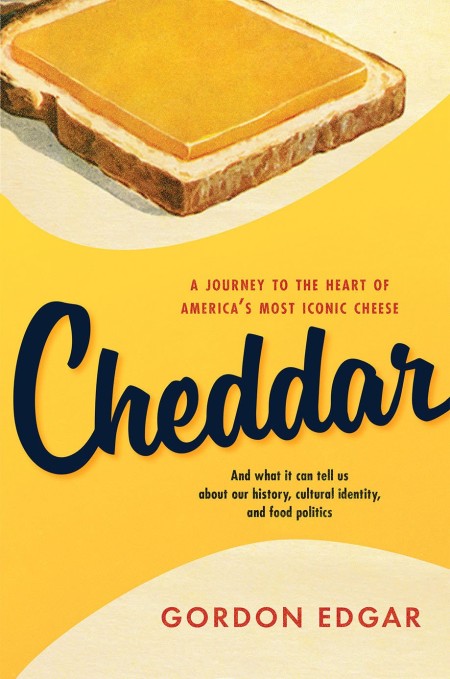


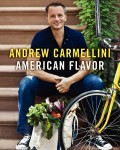
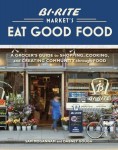


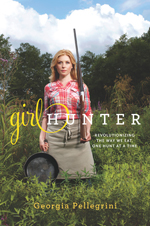
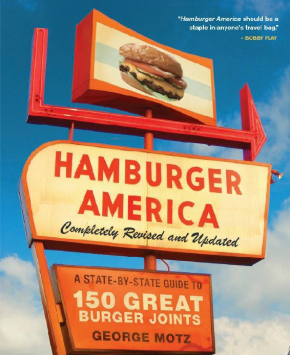
Leave a Reply